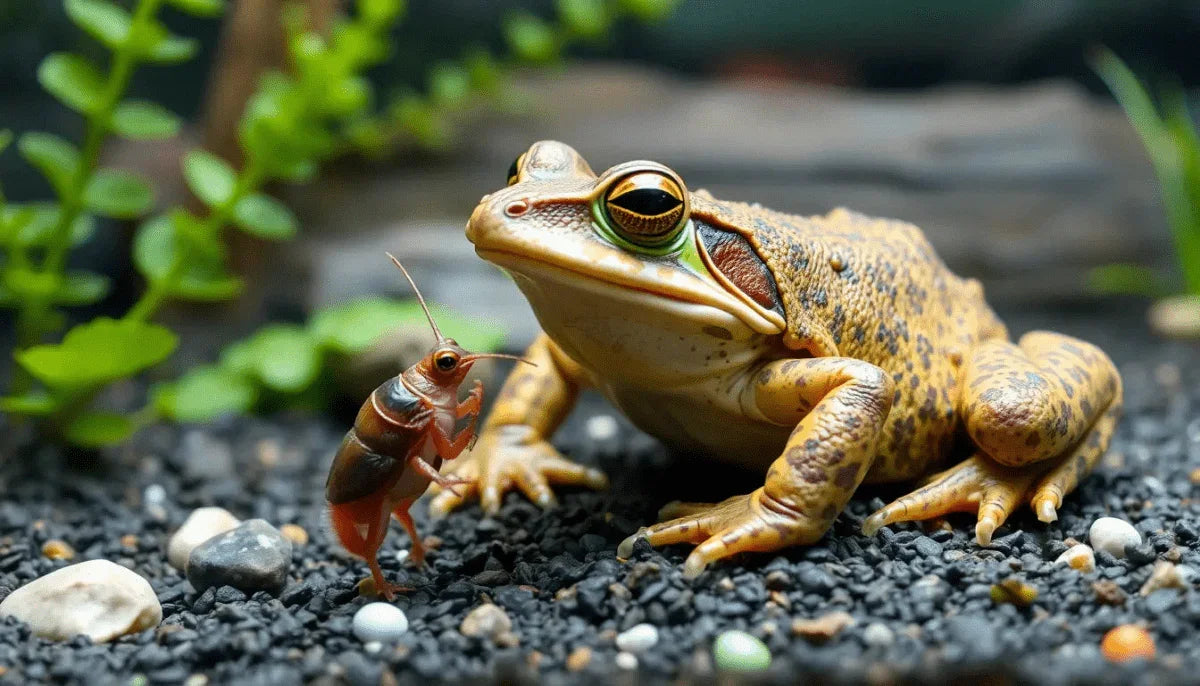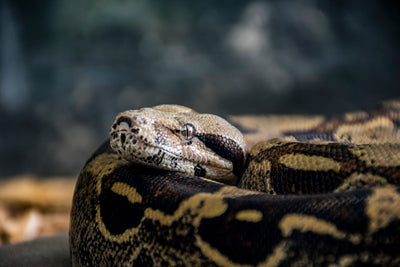american bullfrog food: A complete guide for healthy bullfrogs
Introduction
Feeding your American bullfrog the right food matters for health and growth. A poor diet can cause slow growth, metabolic bone disease, or obesity.
This guide helps new keepers, owners improving diets, and Talis Us customers. You will learn a balanced captive American bullfrog diet, feeder options, feeding schedules, and safe buying tips.
Basics of American Bullfrog Food Needs
Wild diet vs. captive needs
In the wild, bullfrogs eat a wide range of prey. They catch insects, small fish, crustaceans, and even small rodents or birds. That variety gives them proteins, fats, and micronutrients.
A captive American bullfrog diet should mimic that variety. Relying on one food type will cause gaps. Offer a mix of live feeders, occasional frozen prey, and suitable pellets.
Key nutrients to provide
Protein is essential for growth. Juveniles need more protein than adults. Calcium and vitamin D3 support bone health. Fat provides energy, but too much causes obesity.
Hydration and clean water are critical. Bullfrogs absorb water through skin and must have clean shallow water to soak in.
Watch for nutrient gaps. Signs include soft jaws, lethargy, poor shedding, and bowed legs. If you see these, review diet and supplementing routines.
Best Feeder Insects for American Bullfrogs
Top live feeders
Good choices include crickets, dubia roaches, black soldier fly larvae, and mealworms. These provide protein and activity that stimulates hunting.
Waxworms and superworms are higher in fat. Use high-fat options sparingly as treats only. Too many fatty feeders lead to weight issues.
Also offer variety. Rotate feeder insects to cover different nutrient profiles and textures. Variety keeps them interested and better nourished.
Preparing feeder insects: gut-loading and dusting
Gut-loading means feeding nutritious foods to feeder insects before offering them. Simple gut-load recipes include leafy greens, carrots, and high-quality poultry or fish flakes.
Dust feeders with calcium powder at most feedings for juveniles. Use a multivitamin dust once or twice a week. A typical schedule is calcium without D3 daily and calcium plus multivitamin once weekly.
Pellet Food for American Bullfrogs: Pros and Cons
When to use pellets
Pellet food for American bullfrogs offers convenience and consistent nutrition. Species-specific pellets can fill nutrient gaps when live prey is limited.
Pellets should not replace live food entirely. Bullfrogs benefit from hunting live prey for stimulation and varied nutrition.
Choosing and introducing pellets
Prefer pellets with whole-protein sources high on the ingredient list. Avoid pellets with excessive fillers or unspecified meat meals.
Introduce pellets slowly. Mix pellets with live feeders or crushed frozen prey. Observe acceptance and adjust ratio over several weeks.
Juvenile vs Adult Bullfrog Diet
Juvenile feeding needs
Juveniles grow fast and need frequent meals. Feed small prey often. Offer multiple small feedings or daily feedings to support growth.
Portion sizes should match mouth size. Smaller crickets, pinhead dubia, and tiny mealworms work best for young bullfrogs.
Adult feeding needs
Adults eat less often and take larger prey. Feed to maintain healthy weight. Fewer feedings reduce obesity risk.
Adjust diet for breeding adults. Increase feeding slightly during breeding season. For overwintering adults reduce feeding and monitor body condition.
Practical Feeding Schedule for American Bullfrogs
Sample schedules
For juveniles, a daily or alternate-day plan works well. Feed small prey daily or every other day, depending on activity and appetite.
For adults, feed twice weekly to every few days. Large adults may take a full-sized cricket or a small mouse occasionally.
Monitoring and adjusting the schedule
Watch body condition and appetite. A healthy bullfrog has a rounded body and alert behavior.
If weight drops or appetite falls, increase frequency or improve prey quality. If weight climbs quickly, cut calories and remove high-fat treats.
Safety, Common Mistakes, and Health Tips
Avoiding risky foods and choking hazards
Never feed prey larger than the widest part of the bullfrog’s head. Large prey can cause choking or impaction.
Avoid wild-caught prey. Wild insects may carry pesticides or parasites. Do not feed toxic insects like fireflies, which are lethal.
If a feeder is too big, cut it into smaller pieces or choose smaller species. Monitor feeding until your frog can handle larger prey.
Hygiene and handling
Store live and frozen feeders safely. Keep live feeders in ventilated containers and frozen feeders in sealed bags.
Clean feeding areas and water regularly. Change soak water daily and remove uneaten prey. Poor hygiene leads to infections and parasites.
When to consult a vet
See a vet for sudden weight loss, persistent lethargy, swelling, or frequent shedding problems. These are signs of malnutrition or illness.
Bring a diet history to your vet. Note what you feed, the feeding schedule for American bullfrogs, and any supplements used.
Buying Quality Food and Supplies (Talis Us Resources)
What to look for when buying feeders and pellets
Look for fresh feeders from reputable suppliers. Check for live activity and clean storage. For frozen prey, look for clear packaging and no freezer burn.
For pellets, check ingredient transparency. Prefer named protein sources and minimal fillers. Compare prices and supplier reviews.
How Talis Us can help
Talis Us stocks a range of vetted feeders, pellet food for American bullfrogs, and supplements. We focus on quality and clear sourcing.
Shop for crickets, dubia roaches, black soldier fly larvae, frozen prey, and species-appropriate pellets. Ask Talis Us staff for storage and care tips when you buy.
Conclusion
A balanced american bullfrog food plan relies on variety, nutrients, and a sensible schedule. Use live feeders, pellets, and supplements to meet needs.
Start simple, monitor growth and body condition, and adjust as needed. Keep hygiene high and avoid risky prey.
Check Talis Us for vetted feeder insects for American bullfrogs, pellet food for American bullfrogs, and trusted supplements. Our selection makes feeding easier and safer.






